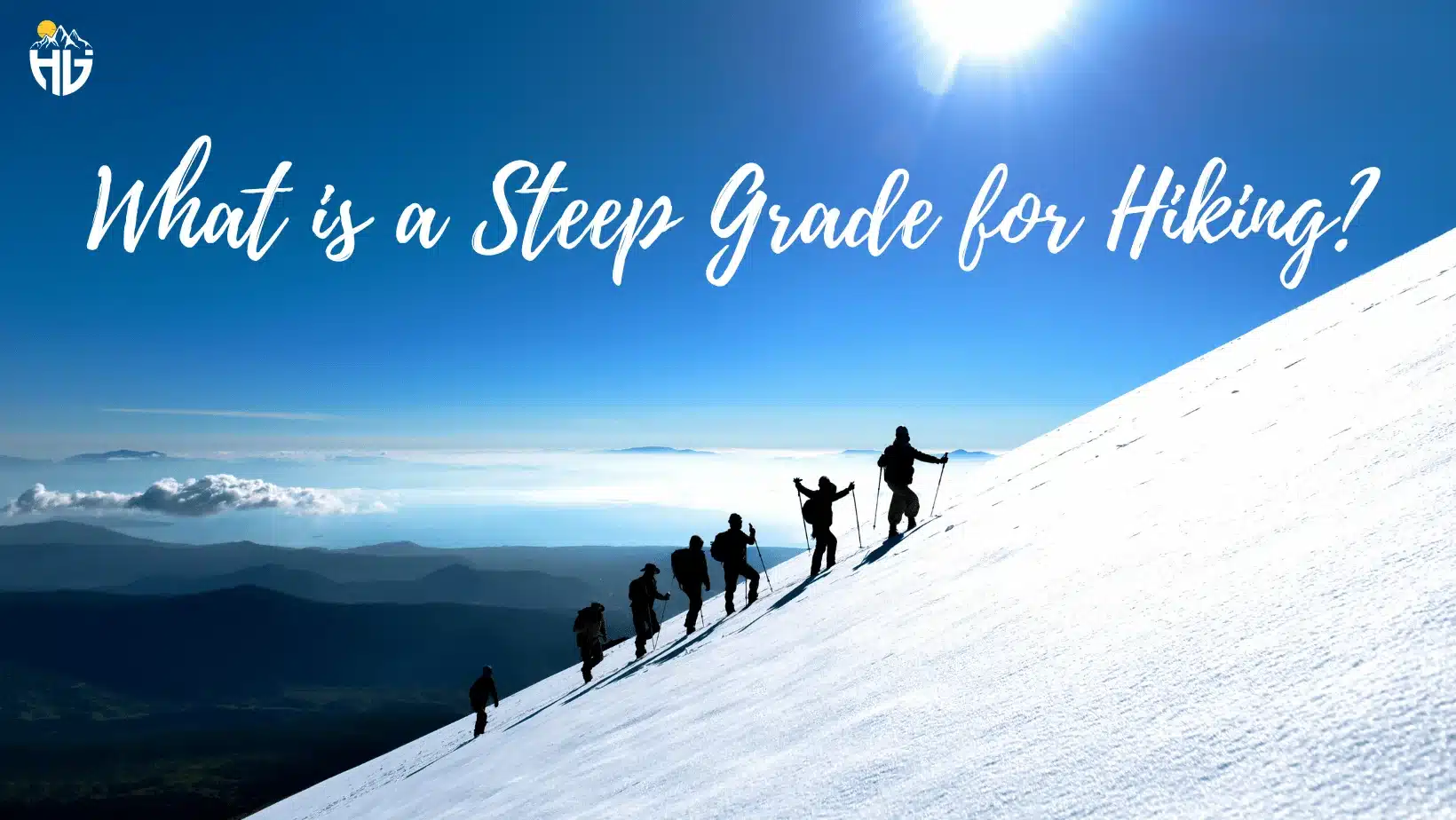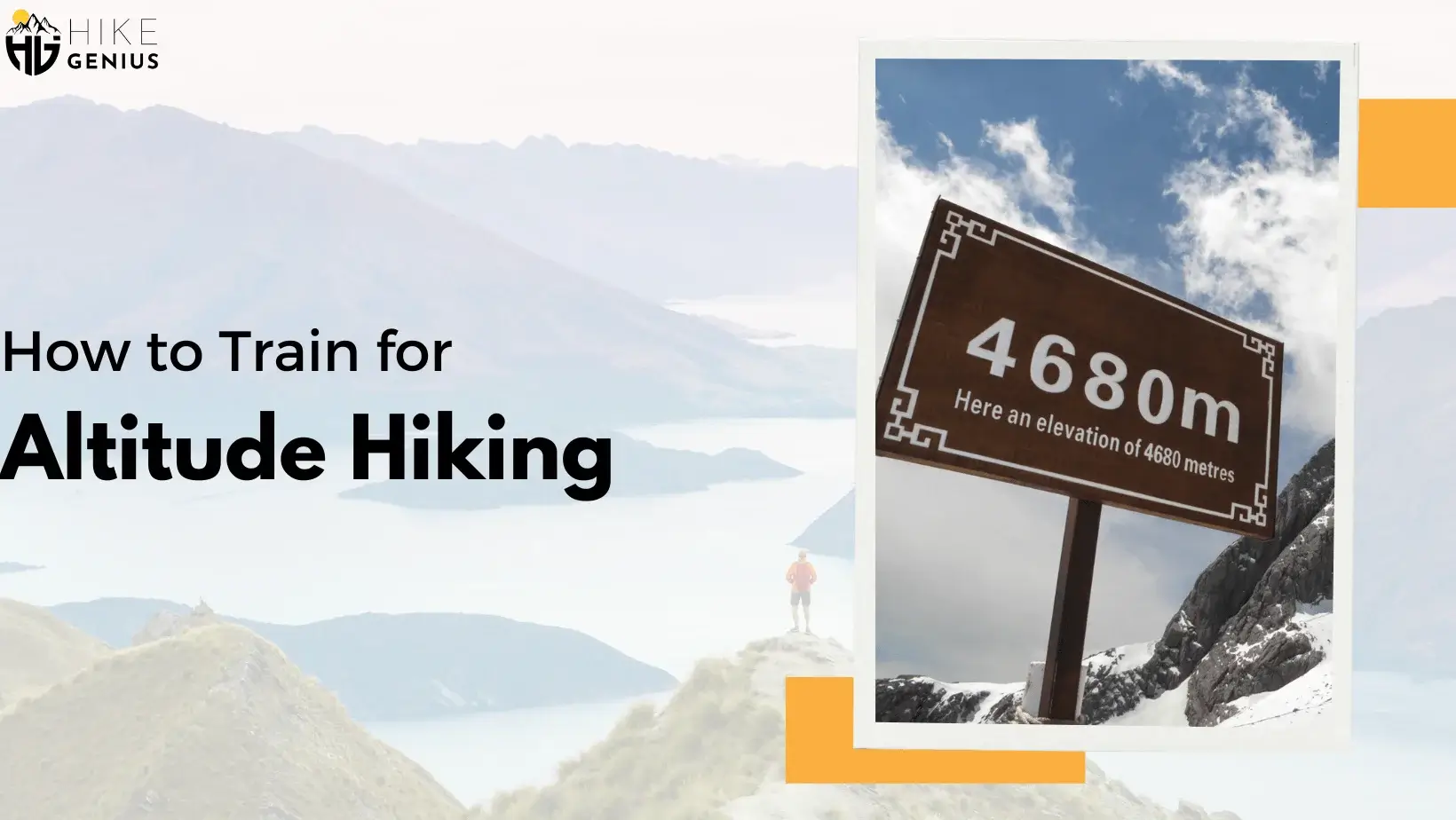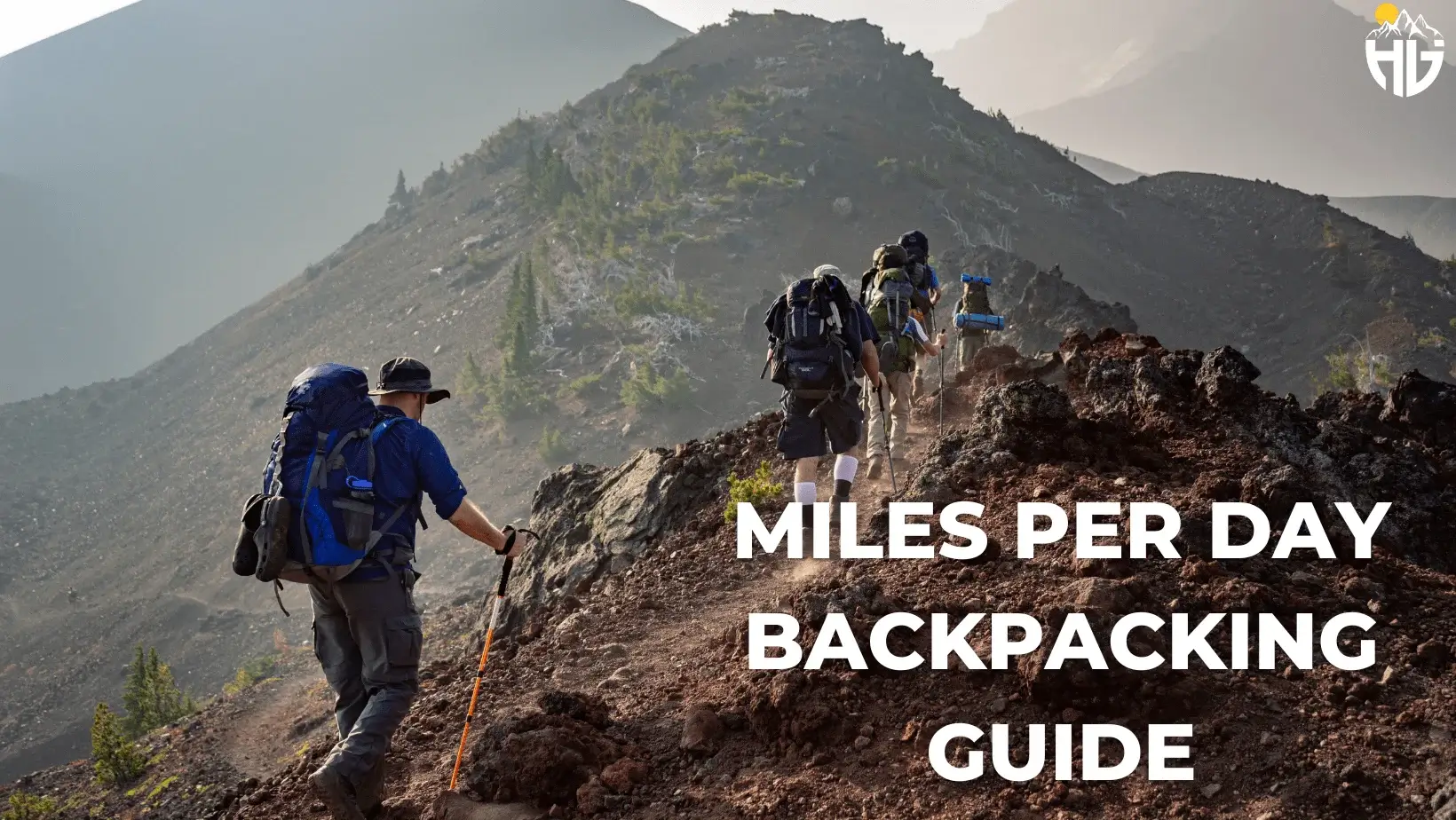What is a Steep Grade for Hiking?

Popular outdoor activities such as hiking have many positive effects on physical and mental health. There are many reasons why people enjoy hiking, from beautiful scenery to difficult trail. However, not all hikes are created equal, so before setting out on a hiking adventure, knowing the hiking trail difficulty is crucial. The grade’s steepness is one of the most crucial things to consider when hiking.
In this article, we’ll look at how to measure trail grades, what constitutes a steep grade for hiking, and what to expect when hiking in steep terrain. Understanding steep grades can help you better plan for your hiking adventures and decide the trails you choose to take on, whether you are an experienced hiker or just getting started. So let’s begin and explore what the trail has in store for us!
What is a Steep Grade for Hiking?
In this section, we’ll provide a detailed overview of Steep Grades, and how they are measured. Read on!
How do you Define Steep Grade in Hiking?

In hiking, a steep grade is an incline that demands more exertion and energy to navigate than a relatively flat or gently sloping hiking trail. Walking on a steep incline is more physically challenging than easier hiking trails and may require more knowledge and experience.
Generally, a steep grade is higher than a predetermined incline, which varies depending on the trail and the skill level of the hiker.
Measuring Steep Grades For Hiking Difficulty

Depending on the trail difficulty and the hiker’s viewpoint, steep grades can be assessed in various ways. The degree of incline and what is considered steep elevation gain are two of the most popular elements of every trail difficulty rating system, such as swiss hiking scale, Yosemite decimal system etc.
Degree of Incline
A trail’s degree of incline, typically expressed as a percentage or a ratio, can be used to assign a numerical rating of hiking difficulty. A 10% grade, for instance, would be present on a trail that rises 100 feet over a total distance of 1,000 feet. Anything above a certain percentage, such as 10% or 15%, might be considered steep in hiking difficulty scale.
Elevation Gain
The total amount of vertical ascent the trail experiences throughout its length, or elevation gain, is another way to gauge how steep is too steep to hike a trail. Both feet and meters can be used to express this. Even if the trail has a slight incline, hiking trails with high elevation gains can be difficult.
Illustrating Different Types of Hiking Trail Grades
Depending on their difficulty, hiking trails can be categorized into several groups. Here are some examples of the various trail grades you might see while hiking:
Easy

Trails with easy grades have little elevation gain and are largely flat terrain. Beginners or hikers with little experience can use these trails.
The Discovery Trail in Pacific Rim National Park, Canada, is a 1.6-kilometer trail that meanders through coastal rainforest and along the Pacific Ocean. It is relatively flat and suitable for all ages and skill levels.
Moderate

Although some steeper sections are on moderately graded trails, most novice hikers can generally manage them. They might have some switchbacks or unsteady ground, making them long, but on an easier difficulty level scale..
The Beehive Trail in Acadia National Park, Maine, is a 1.4-mile trail that includes some steep climbs, iron rungs, and narrow ledges. It offers stunning views of the coastline and is generally suitable for hikers with some experience.
Difficult

Trails with a high difficulty level are steep, demanding, and have difficult terrain. They also have a significant amount of elevation gain. These trails call for knowledge, experience, and good physical health.
The Bright Angel Trail in Grand Canyon National Park, Arizona, is a 12-mile round-trip trail with significant elevation gain, extremely difficult, and challenging terrain. It requires a high level of physical fitness and hiking experience.
Tips for Hiking Steep Grades

Although climbing steep inclines can be demanding and rewarding, it requires careful planning and preparation to ensure a secure and enjoyable hike.
In this section, we’ll review techniques for navigating various kinds of steep grades, offer advice for hiking steep grades, and stress the value of knowing your limits and listening to your body.
Using Proper Gear

Having the right equipment can be extremely helpful when hiking up steep inclines. Here are some pointers for choosing the right equipment:
Footwear: To help prevent falls on steep and uneven terrain, wear supportive, stable hiking boots with good traction.
Clothing: Wear comfortable, breathable, moisture-wicking clothing that allows for a full range of motion. To adjust to changing weather conditions, layer your clothing.
Backpack: To distribute weight evenly and lessen the strain on your back, use a backpack with padded straps and a waist belt.
Pacing Yourself

Pace yourself when climbing steep inclines to conserve energy and avoid fatigue. Here are some pointers on how to pace yourself:
Start Slowly: To warm up your muscles before accelerating as you hike, start with a slow pace.
Use a Hiking Pole: A hiking pole can offer additional stability and support on steep inclines, relieving stress on your legs and knees.
Take Breaks

During a steep-grade hike, breaks are crucial to allowing your body to rest and recover. Here are some pointers for rest periods:
Plan Ahead: Schedule your rest stops in advance to ensure you have enough time to recover without slowing down.
Hydrate: Drink plenty of water to prevent dehydration, leading to fatigue and muscle cramps.
Techniques for Navigating Different Types of Steep Grades
Different navigational techniques are needed for different kinds of steep grades. Following are some tips for navigating various kinds of steep grades:
Switchbacks: Switchbacks can lower the trail’s gradient and make rock climbing on steep grades easier. Back and forth along the trail, moving slowly to advance.
Steep Ascents: Take small steps and hold onto the ground with your toes when climbing steep ascents. To keep your balance, lean slightly forward while raising your arms.
Scrambling: Using your hands and feet to climb over rocks and boulders while scrambling. To aid in your ascent, search for hands and footholds. Be cautious to prevent slipping and falling.
Listen to Your Body and Know Your Limits
When hiking steep grades, paying attention to your body and understanding your limits is crucial. Here are some pointers for avoiding harm and staying safe:
Stop if You’re Tired: If you feel exhausted, stop hiking altogether or take a break. Hiking when you’re exhausted increases your risk of getting hurt.
Know Your Limits: Be realistic about your physical limitations and pick hikes appropriate for your fitness level.
Effects of Steep Hiking Trails on Hikers

It’s important to understand the physical and safety challenges of hiking steep grades if you want to enjoy nature and exercise. In this section, we’ll talk about how steep grades affect the most hikers and how to get ready for them so that you can have a safe and enjoyable hike.
Physical Effects on the Body
Your body may suffer if you hike steep inclines, especially if you’re not used to the physical demands of hiking. The following are some typical physical effects of ascending steep grades:
Muscle soreness and fatigue: Hiking’s steep incline can result in muscle soreness and fatigue, particularly in the legs. Your performance and ability to finish the walk may be affected by this.
Increased heart rate and breathing difficulty: Climbing steep grades can make your heart work harder and make breathing more challenging. This may even pose risks related to cardiovascular strain and affect your overall endurance and stamina.
Risk of injury: Hiking up steep inclines can put your ankles, knees, and hips at greater risk of harm. Dangers like loose rocks, unstable ground, and tree roots can present on steep-grade hikes. To prevent injury, it’s crucial to keep your balance and proper form.
Importance of Proper Gear and Preparation
It’s crucial to have the right equipment and be prepared to minimize the physical effects of hiking steep grades and lower the risk of injury. Here are some crucial things to think about:
Footwear: Wearing the right shoes can increase comfort and support while lowering the risk of injury. Choose hiking boots or shoes with sturdy soles and good ankle support to reduce the risk of slipping and falling.
Clothing and equipment: Wearing the proper clothing and carrying the right tools are essential when hiking steep inclines. A backpack with a hydration system, trekking poles and weather-appropriate clothing could be part of this.
Nutrition and hydration: Proper hydration and nutrition can affect your walking performance and overall health. Bring enough water and snacks to keep yourself hydrated and energized.
Safety Considerations for Challenging Terrain
Safety considerations must also be taken into account when hiking up steep inclines. The following are important things to bear in mind:
Weather and trail conditions: Safety on steep-grade hikes can be affected by weather and trail conditions. Before leaving, be sure to check the weather and the state of the trails and make any necessary adjustments.
Group dynamics and communication: Effective teamwork among hikers can help to increase safety on difficult terrain. Ensure that everyone in your group is aware of the strategy and that you all remain near one another and aware of each other’s whereabouts at all times.
Emergency preparedness: On hikes with a steep grade, preparing for emergencies is crucial. Bring a first aid kit, maps, communication equipment, and other emergency supplies to prepare for unforeseen events.
Frequently Asked Questions
What Is the 10% Steep Grade for Hiking?
A 10% steep grade for hiking refers to a slope with a rise of 10 feet for every 100 feet of horizontal distance traveled. This means that for every 10 feet of elevation gain, you will hike 100 feet in distance. It is considered a moderately steep grade and can be challenging for some hikers, especially those who are not accustomed to steep terrain.
What is the Definition of Very Strenuous Hikes?
The definition of a Strenuous Hike is subjective and can vary depending on the hiker’s fitness level, experience, and the terrain being hiked. In general, it refers to a trail or section of a trail with a significant increase in elevation over short distances.
The term “steep” can also be relative to the surrounding terrain, such as hiking in a flat area versus hiking in a mountainous region where steep grades are more common. A steep hike may require more effort, endurance, and caution than a gradual or moderate hike.
Conclusion
Hiking steep grades can be a rewarding experience, but it requires proper preparation and techniques to stay safe and comfortable. We discussed the definition of steep grades, the different categories of hiking trail grades, and provided tips for hiking steep grades, such as using proper gear, pacing yourself, and taking breaks.
We also covered techniques for navigating different types of steep grades, such as switchbacks, steep ascents, and scrambling. Finally, we emphasized the importance of listening to your body and knowing your limits to stay safe and avoid injury.
We encourage readers to continue exploring hiking and to use the information provided in this article to make informed decisions about their hiking experiences. By being prepared and knowledgeable, experienced hikers can enjoy the beauty and challenge of steep grades while minimizing the risk of injury.
Founder & CEO
at
Meraki Writes
Meet M. Fahad Sajjad, the Founder & CEO of Meraki Writes, a successful content marketing agency that has been helping businesses achieve their marketing goals through compelling content. With over a decade of experience in the digital marketing industry, Fahad is a seasoned professional who understands the power of content in driving traffic, engagement, and conversions.





